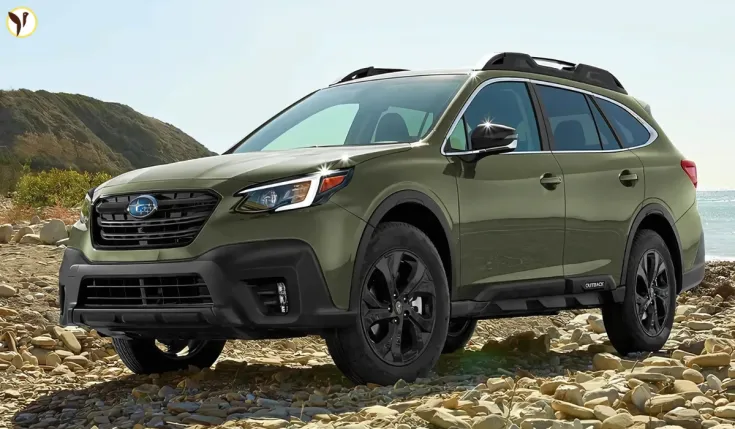The Outback from Subaru has been a staple for outdoor enthusiasts or daily drivers for some time. Its reliable performance and all-wheel-drive capabilities have attracted people to it across several generations. Each generation has its own advantages and disadvantages in terms of reliability. Let's assess the reliability of each generation so you can decide which version of the Outback best fits your needs.
1st Generation (1995–1999): The Trailblazer
The first Subaru Outback debuted in 1995 as a trailblazer that combined the qualities of a station wagon with the rugged nature of a sport utility vehicle, equipped with raised suspension, body cladding, and standard all-wheel drive, a much desired vehicle for anyone wanting to get out and enjoy the outdoors. Although it was the start of something innovative, this generation still had issues, especially the head gasket failure on the 2.5L engines.
Highlights
- Pioneered 'crossover SUVs'
- Standard all-wheel drive provided impressive traction
- Basic mechanical design made for easy maintenance
Common Problems
Head gasket failures on 2.5L engines
Lacking safety features compared to today

2nd Generation (2000–2004): Improvement with Concerns
There were improvements in comfort, safety, and performance with the second-generation Outback. The introduction of the 3.0L H6 engine provided better power, but the ride is even smoother. The continue to suffer from head gasket problems, especially in 2.5L engines.
Positive Aspects
- Better comfort and safety in entirety of interior space
- Desirable 3.0L H6 was introduced! Very good improvements in power rolls and handling.
Common Problems:
- Continue with head gasket failure in the known 2.5L engines.
- Potential for oil leaks, cooling system issues.

3rd Generation (2005–2009): The Workhorse
This generation is commonly regarded as a reliable and durable vehicle. It was in this generation, with the more rugged construction and the introduction of the turbocharged XT model, was both fun to drive yet practical. The 3.0L H6 engine is often considered to be the most dependable of the H6 engines in the lineup.
Highlights
- Strong reliability history, in particular with the later models.
- Turbocharged XT was introduced.
- Improved safety features and crash test ratings.
Common Issues:
- Some models had airbag recalls.
- Some models had minor wear item suspension components.

4th Generation (2010–2014): Technological Advancements, Reliability Issues
The fourth-generation Outback sported a more SUV-like design; while it had some environmental advantages, such as compared to previous generations, it didn't constitute anything remarkable compared to other cars and SUVs. It did have more interior space, to some degree. This iteration of the Outback also had the introduction of Subaru's EyeSight safety system. The years 2010-14 were also when the Outback faced significant reliability problems, including excessive oil consumption and CVT problems, which resulted in a class-action lawsuit against the automaker (Subaru).
Some Highlights Include
- The introduction of EyeSight driver-assist technology.
- More spacious interior and comfort.
- Better off-road abilities.
Some of the Common Issues Found
- 2.5L engines were burning oil excessively.
- CVT transmission failures, particularly in 2011 models.
- There was a class action lawsuit related to the engine issues.

5th Generation (2015 - 2019): Contemporary Comforts with Electrical Oddities
The 5th generation of the Outback emphasized comfort and technology. It came with a more refined interior and more advanced infotainment systems. The Outback addressed some of its prior issues but also brought new dilemmas, including issues of battery drain and unintended acceleration reports.
Positive Aspects
Redesigned interior with contemporary infotainment.
Improved ride quality and handling.
Safety advancements and crash test ratings.
Common Issues
Battery drain issues, especially in the 2015 model year,
Unintended acceleration complaints that led to a class action lawsuit,
Steering column related recalls in the 2016 and 2017 model years.

6th Generation (2020–Present): Tech is Advanced and Capable
The new Outback generation is built on the Subaru Global Platform, which enhances safety, technology, and off-road capability, especially with the Wilderness trims. While there were issues with infotainment bugs and windshield problems in the early models, the prospects for future models look promising.
Highlights
Introduction of the Subaru Global Platform that provides safety enhancements.
New infotainment and driver-assist technology.
Wilderness trim for superior off-road capability.
Common Issues
Glitches with the infotainment system in early models.
Windshield cracking reported in the 2021 and newer models.
The battery drain issue remains for some units.

Quick Comparison Table
| Generation | Years | Strengths | Common Issues |
| 1st | 1995–1999 | Rugged, reliable | Head gasket failures |
| 2nd | 2000–2004 | Improved comfort and safety | Oil leaks, head gasket issues |
| 3rd | 2005–2009 | Balanced performance and reliability | Airbag recalls in some models |
| 4th | 2010–2014 | Advanced safety features | Oil consumption, CVT problems |
| 5th | 2015–2019 | Modern interior and tech | Electrical system glitches |
| 6th | 2020–Present | Advanced safety and off-road capability | Early software bugs, windshield issues |
Conclusion
After closely analyzing each generation's strengths and weaknesses, one thing is certain: Subaru's reputation of building long-lasting, go-anywhere wagons continues to thrive in the Outback. Like all models, there is no such thing as perfect vehicles, but certain generations like the 4th (2010–2014) or 5th Gen (2015–2019) show a little better overall with long-term dependability, comfort and demand fewer complaints.
Old-school toughness and fewer electronic parts – look at 2nd or 3rd gen.
Great balance of technology/safety and reliability – choose 4th or 5th gen.
Features and refinement – the 6th gen looks strong, but still developing its long-term reliability.
Source(Image / Thumbnail): carbuzz, vivacar




